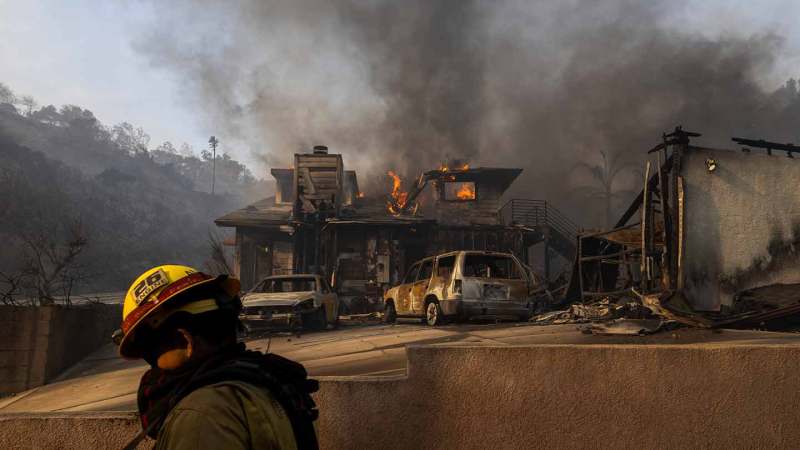
People are flocking to the threshold of nature and the territory of fire.
Homes built where human development meets undeveloped wild land are particularly vulnerable to fires and other natural hazards (SN: 11/9/23). However, people are moving into the wild-urban interface, or WUI, and are rapidly expanding it. From 2000 to 2020, the global footprint of WUI grew by about 35 percent, reaching a total area roughly the size of Mexico, researchers report Nov. 8 in Advances in science.
The most pressing conflicts between humans and nature are concentrated in these areas, says geographer Jianghao Wang of the University of the Chinese Academy of Sciences in Beijing. Expanding the total area of the WUI “raises the likelihood of people being exposed to wildfires, posing greater threats to life and property.”
This danger has been on full display in recent weeks. For example, numerous wildfires have spread across WUI areas in Southern California. These include the ongoing mountain fire, which broke out in the Somis area on November 6 and has since destroyed more than 130 properties and forced more than 10,000 people to evacuate.
Using satellite data from 2000, 2010 and 2020, Wang and his colleagues mapped the global distribution of WUI at 30-meter resolution. They found that urbanization had driven a rapid expansion of WUI that had accelerated over time.
Starting at about 1.4 million square kilometers in 2000, the WUI grew by about 5 percent in the first decade and about 30 percent in the next decade, to about 1.9 million square kilometers in 2020. United States, East China and Nigeria saw some of the largest increases in WUI. “This reality highlights the need for policymakers to prioritize fire control as more regions become vulnerable,” says Wang.
A subsequent analysis of satellite detections of the fires revealed that fire activity near the WUI had also changed. The team looked at two periods: from 2008 to 2012 and 2018 to 2022. The number of small fires — those burning one square kilometer or less — increased by about 23 percent within one kilometer of WUI areas between those two times.
The findings could help governments develop or improve policies and guidelines to manage fire risk, the researchers say.SN: 5/13/20). WUI residents are also advised to be cautious about starting fires in vegetated areas, so as not to exacerbate the danger to others living within these fire boundaries.
#Fireprone #neighborhoods #fringes #nature #expanding #rapidly
Image Source : www.sciencenews.org